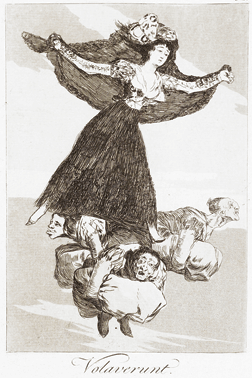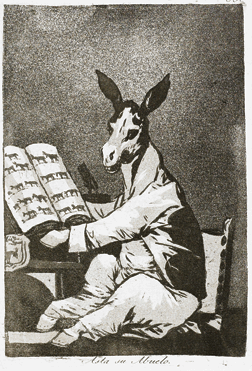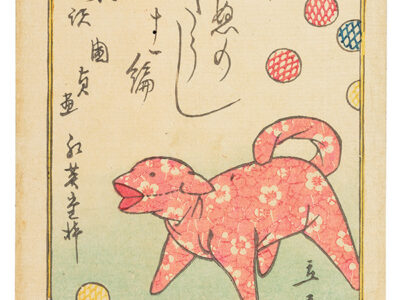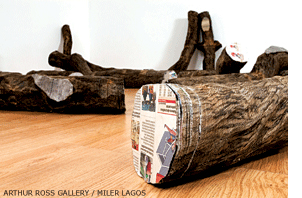
The appearance of [Francisco Goya y Lucientes’] Los Caprichos in 1799 marked the end of the century and the beginning of the period of the Enlightenment and the Age of Reason, and was a turning point in western art.” So writes philanthropist and art collector Arthur Ross W’31 Hon’92 of the first-edition prints that he and his wife have lent to the eponymous campus gallery for its current show.

The exhibition, which runs through January 7, also commemorates a significant turning point for arts and culture at Penn—it was 25 years ago that a similar show of Goya’s Caprichos loaned by the Arthur Ross Foundation gave what would become the Arthur Ross Gallery its start. That show was in Van Pelt Library’s Rosenwald Gallery, but within a couple of years Ross’ generosity had helped fund the renovations that created the gallery’s current space in the Fisher Fine Arts Library. And the gallery’s first show in 1983 featured other Goya prints, La Tauromaquia and Los Disastres de le Guerra.
While its shows have ranged far and wide in subject, medium, and style over the years, the gallery has “remained true to its roots,” with a lasting focus on fine prints from all eras, notes director and curator Dilys Winegrad Gr’71. She cites an exhibition of prints by Piranesi and Canaletto, another of prints by 19th-century French artists, and shows developed by students working with art historians on the Penn faculty—most recently “The Early Modern Painter-Etcher,” which focused on 15th-18th-century artists who are better known as painters. Many of the exhibitions have been supported by the Ross Foundation.

The word capricho derives from “cabra, the goat, who scorns the huddle of sheep on the valley floor to browse dangerously on the cliffs,” writes Ross in his collector’s statement that accompanies the Goya show. The prints highlight human error and vice through a mix of realistic and fantastic images, and were shocking enough at the time that they “barely escaped censorship and an official ban.” Placing Goya in the ranks of Rembrandt and Picasso as an etcher, Ross adds that “the universality of his art is evident in the fact that the etchings remain as intensive a visual and intellectual experience today as they were for the artist’s contemporaries: Goya’s innovations open a stimulating and provocative journey that leads to modern art and beyond.”

The first-edition prints were originally bound and sold as a single volume; Goya himself sold 27 copies before trading the 80 copper plates and 240 impressions he had made for a pension for his son. The edition on exhibit came to Ross by way of one Lieutenant-General John Ramsay, who first acquired it while serving with British forces in Spain in the early 1800s. After remaining in the Ramsay family in Scotland for many years, it passed to a Swiss and then an American collector before Ross bought it.
The current show includes the complete set of 80 first-edition prints from the Ross collection, Winegrad says. “While enjoying the opportunity to view this mint edition, we recognize and appreciate Mr. Ross’ wisdom a quarter-century ago in foreseeing the need—and taking steps to provide for—a gallery in the heart of the University as a means of introducing and presenting historic art and artifacts in all media from regions across the globe.”—J.P.




